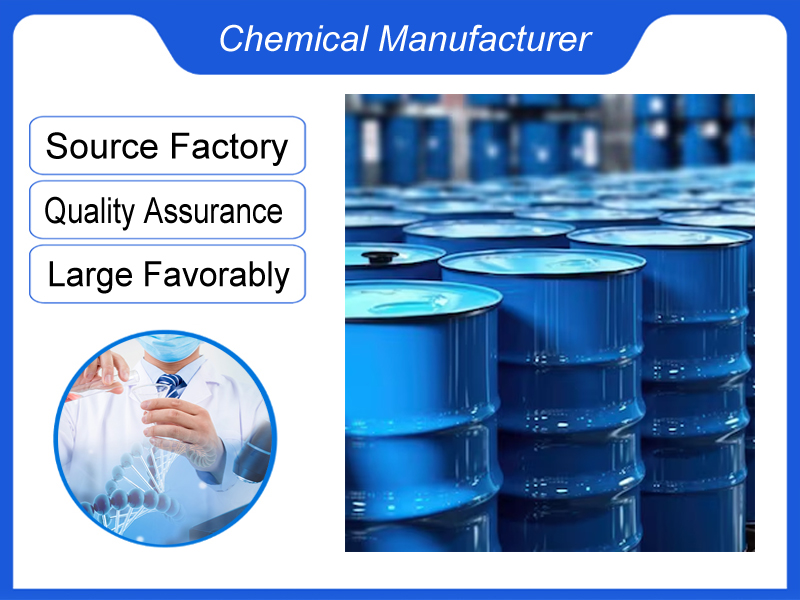
YD-1#Polyether
We are a manufacturer based in China. We specialize in providing high-quality YD-1#Polyether for industrial clients across various sectors. Whether you need chemicals consultation or technical support, our team is here to help.
Category:Paint chemicals Own Brand:MT /MOQ:100KG /From China/ B2B only.
Introduction
Polyether YD-1# Type: Technical Data Sheet
| Category | Specifications |
|---|---|
| Chemical Classification | Aliphatic polyether polyol |
| Molecular Structure | Terminal hydroxyl groups, linear/branched chain |
| Appearance | Colorless to pale yellow viscous liquid |
| Hydroxyl Value (mgKOH/g) | 28±2 |
| Viscosity @25°C (mPa·s) | 400-600 |
| Molecular Weight | 4000±200 |
| Acid Value (mgKOH/g) | ≤0.05 |
| Water Content (%) | ≤0.05 |
| Density @25°C (g/cm³) | 1.02-1.05 |
Key Performance Characteristics
| Property | Performance Data |
|---|---|
| Reactivity | Medium reactivity with isocyanates |
| Compatibility | Excellent with common polyurethane raw materials |
| Thermal Stability | Stable up to 180°C |
| Hydrolytic Stability | Excellent |
| Mechanical Properties | Produces flexible PU products |
Primary Applications
| Industry Sector | Typical Uses |
|---|---|
| Polyurethane Foams | Flexible slabstock foams |
| Elastomers | Cast PU elastomers |
| Adhesives | PU-based adhesive formulations |
| Coatings | Two-component PU coatings |
| Sealants | Elastic sealant compositions |
Processing Parameters
| Parameter | Recommended Range |
|---|---|
| Storage Temperature | 15-30°C |
| Shelf Life | 12 months in sealed containers |
| Handling Precautions | Moisture protection required |
| Typical Mixing Ratio | NCO:OH = 1.05-1.10 (for PU systems) |
Safety & Regulatory
| Aspect | Information |
|---|---|
| Flash Point | >200°C |
| Toxicity | Low acute toxicity |
| Transportation | Non-hazardous cargo |
| Regulatory Status | Complies with major chemical regulations |
This polyether polyol demonstrates balanced properties for flexible polyurethane applications, offering good mechanical performance while maintaining processing stability. The material exhibits typical polyether characteristics including hydrolytic stability and low viscosity for easy processing.
It is GB12981’s HzY3 brake fluid anti-evaporation raw material.
YD-1# Polyether is a type of polyether compound widely used in industrial applications, particularly in the production of polyurethane foams, coatings, adhesives, and elastomers. Polyethers are polymers characterized by the presence of ether linkages (–C–O–C–) in their backbone, and YD-1# is a specific formulation designed to meet the performance requirements of various end-use applications.
Composition and Structure
YD-1# Polyether is typically synthesized through the polymerization of alkylene oxides, such as ethylene oxide (EO) or propylene oxide (PO), initiated by polyfunctional alcohols (e.g., glycerol or propylene glycol). The resulting polymer has a flexible backbone with hydroxyl (–OH) end groups, which are reactive and allow for further chemical modifications or cross-linking.
Properties
1. Molecular Weight: YD-1# Polyether has a controlled molecular weight, which influences its viscosity, reactivity, and mechanical properties.
2. Hydroxyl Value: The hydroxyl value (OH value) is a key parameter that determines its reactivity with isocyanates in polyurethane production.
3. Viscosity: It exhibits a moderate to high viscosity, depending on its molecular weight and structure.
4. Thermal and Chemical Stability: YD-1# Polyether is stable under a wide range of temperatures and resistant to hydrolysis and many chemicals.
Applications
1. Polyurethane Foams: YD-1# Polyether is a key raw material in the production of flexible, semi-rigid, and rigid polyurethane foams used in furniture, insulation, and automotive applications.
2. Coatings and Adhesives: It is used in coatings and adhesives to provide flexibility, durability, and adhesion properties.
3. Elastomers:YD-1# Polyether is employed in the synthesis of polyurethane elastomers, which are used in seals, gaskets, and industrial components.
4. Specialty Chemicals: It can be modified or functionalized for use in specialty applications, such as surfactants or lubricants.
Advantages
– Versatility: Can be tailored to meet specific performance requirements by adjusting its molecular weight, hydroxyl value, and structure.
– Reactivity: The hydroxyl end groups enable easy cross-linking with isocyanates, making it ideal for polyurethane production.
– Durability: Provides excellent mechanical properties, such as flexibility, toughness, and resistance to wear and tear.
Safety and Handling
– Health Hazards: YD-1# Polyether is generally considered low in toxicity but may cause mild irritation to the skin or eyes. Proper handling procedures should be followed.
– Storage: Store in a cool, dry place, away from moisture and incompatible materials (e.g., strong acids or bases).
– Personal Protection: Use gloves, goggles, and protective clothing when handling to minimize exposure.
Environmental Considerations
– Biodegradability: Polyethers are generally not readily biodegradable, so proper disposal methods should be followed.
– Sustainability: YD-1# Polyether can contribute to energy-efficient applications, such as insulation foams, which reduce energy consumption.
Conclusion
YD-1# Polyether is a versatile and essential material in the production of polyurethane foams, coatings, adhesives, and elastomers. Its customizable properties and reactivity make it a valuable component in various industrial applications. Proper handling, storage, and disposal practices are essential to ensure safety and environmental responsibility. For specific technical details, consult the manufacturer’s datasheets or technical support.
If you're ready to take the next step, Leave your message below and we’ll reply soon. 20+ years of chemical manufacturing & export experience, a partner you can trust.





